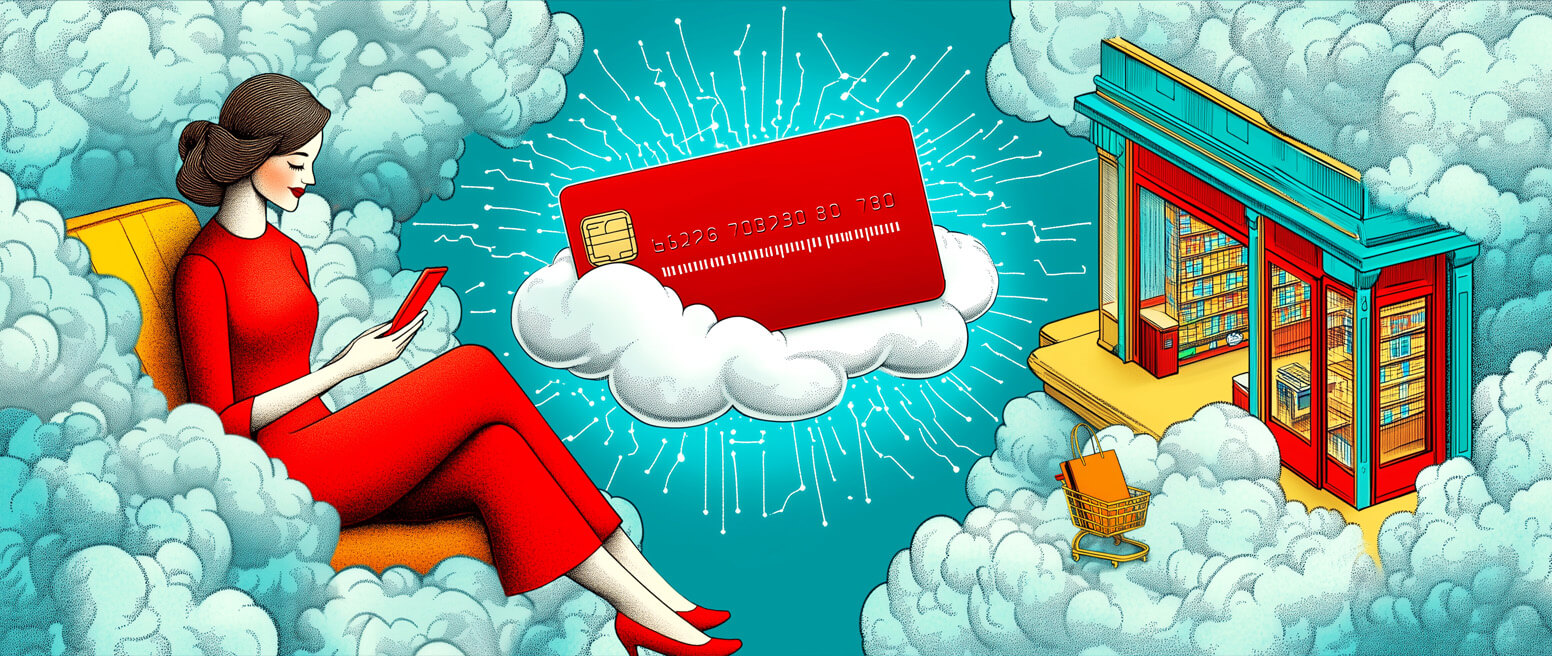Using Dynamic Currency Conversion Without a Cardholder’s Knowledge Can Cost You BIG.
How much is a British pound worth in US dollars? What’s the current conversion rate with the Japanese yen? Does a Chilean peso have the same value as a Colombian peso?
Unless you’re a frequent traveler, you probably don’t give a lot of thought to the currencies of countries other than your own. For merchants in highly visited tourist destinations, however, currency exchange can be a crucial question.
Dynamic currency conversion (or DCC) can be a great, convenient option for some customers. Is it good for you, though? In this post, we look at what DCC does, how it works, and whether it’s a good idea for merchants to offer it.
Recommended reading
- Card-Not-Present Transactions: Know the Risks & Rewards
- Top 15 Customer Returns Reasons in 2025 & How to Avoid Them
- Online Shopping vs In-Store Shopping: the Future of Retail?
- They’re Here — Cyber Week 2024 Stats & Analysis!
- What is a Return Customer Rate? How to Calculate Your RCR
- Prime Day 2024: How to Avoid Chargebacks on the Big Day
What Is Dynamic Currency Conversion (DCC)?
- Dynamic Currency Conversion
Dynamic currency conversion, or DCC, is a point-of-sale payment option that allows cardholders from abroad the option of paying in the local currency or their own currency. DCC typically incurs a fee, which may be variable and pegged to the currency in question.
[noun]/dī • nam • ik • kər • ən • sē • kən • vər • ZHən/When international customers wish to make a credit card transaction at your business, dynamic currency conversion allows them to see the cost in both your local currency and their home currency. The cardholder can then decide which currency to make the payment with.
“Dynamic” means the conversion can happen in real-time, enabling the customer to lock in the exchange rate. Without it, cardholders will be charged based on the exchange rate when the transaction is processed, typically days after the purchase.
While most commonly mentioned in regard to physical purchases, DCC also applies when international customers make online purchases from your website. It also impacts ATM withdrawals where any currency is converted.
How Does DCC Work?
You’ll be glad to know that merchants do not handle the actual conversion calculations. You will, however, need to enroll with a dynamic currency conversion operator in order to offer it.
When the cardholder checks out with a payment card, a special POS terminal will read the card and determine its originating country. If the issuer is in the same country you have your business, the card will be processed normally.
What if the card issuer is outside your country, though? In that case, the card data will be automatically submitted to the DCC provider and run through a dynamic currency conversion calculator. The customer won’t be made aware of this process. All they will see is that the terminal shows the total price in both the local currency and the currency used by the card’s issuer.
The customer can opt to use either method. If they select the converted total, that amount will be transferred from their account in the buyer’s home currency. The converted amount will be credited to you in your preferred currency.
So does that mean you will get the same amount either way? Not necessarily.
Problems With Conventional “Spot” Conversion
For anything other than a cash transaction, international purchases will involve some type of currency conversion. The normal conversion process looks something like this:
There are two important things to note here. First, there’s the use of a temporary exchange rate. Also, note that this is not necessarily the same as the final transaction amount. This is crucial, and can have serious consequences if the two numbers are radically different.
Currencies are traded 24 hours per day, meaning their values fluctuate constantly. Banks update their exchange rate daily, often multiple times per day. In almost every case, there will be some difference between the temporary “spot rate” used for authorization and the actual rate used to bill the cardholder.
Beyond a different exchange rate, the final transaction amount will also include conversion fees. When payment cards are used across borders, issuing banks typically charge a foreign transaction fee, which is usually 1-4% of the purchase.
The card network also adds a fee; generally around 1% of the transaction amount. So overall, a purchase might look like this:
The merchant receives the original transaction amount (in the above example, £85.00) minus interchange fees and any acquirer merchant service charge.
The cardholder gets surprised with extra fees when they open their next monthly statement. What they thought was a $97 purchase shows up as a $104 charge. If the buyer made several purchases abroad using dynamic currency conversion (as most travelers would), it could result in sticker shock for the customer.
How DCC Solves The Problem
The fees can’t be avoided…but the surprise can.
With dynamic currency conversion, merchants can give customers the option of paying in a more familiar currency (in our example, USD). Conversion rates still apply, but the fees are all disclosed at checkout. The customer must actively accept the total cost: the item price, the foreign exchange rate used for conversion, and any fees. They’ll know exactly what they’re paying up front.
So is it worthwhile for merchants to offer dynamic currency conversion? There are numerous advantages to think about. For example:
- You’re able to generate revenue from conversion fees on every DCC transaction.
- If the bank, processor, or conversion vendor marks the cost up further, they may share their overcharge with you.
- Any fluctuations in currency exchange rates won’t affect you, as the exchange rate is locked in at the time of sale.
- While offering DCC offers additional costs, your extra revenue can help offset acceptance fees.
- Despite potential higher costs, many customers prefer shopping in their own currency and knowing the total price upfront.
When it comes to benefits for cardholders, the main advantage is purely convenience. DCC does offer an easier way to comparison-shop between merchants, but otherwise, it is mostly about locking in an exchange rate and seeing the dollar price.
Are There Downsides to DCC?
Sounds great, right? Well, there are a few other points to consider. First, there’s the fact that the buyer may not know exactly what they’re paying for.
How to Avoid Dynamic Currency Conversion Chargebacks
According to both Visa and MasterCard regulations, merchants that provide DCC must do both of the following:
- Disclose the exchange rate and margin to the cardholder.
- Allow the customer to choose whether or not to use DCC.
The surest way to prevent most point-of-interaction currency conversion chargebacks is simply to adhere to those two rules. That said, here are a few additional tips that will help:
- Don’t automatically default to DCC for transactions. Ask customers first.
- Don’t make DCC mandatory. Offer the customer a choice whether or not to use it.
- If using DCC, show customers the total amount in their chosen currency (including the markup).
- Train staff members on the proper use of DCC.
In other words: vigilance, training, and adherence to regulation are the keys to DCC. Using best practices is the only really effective way to prevent dynamic currency conversion chargebacks.
Taking a Wider View
You can take steps to help prevent legitimate chargeback claims, but fraudulent chargebacks are another matter. Friendly fraud is post-transactional, meaning there’s no way to identify it beforehand. You can do everything “right,” yet still get hit with a customer dispute.
It’s generally more efficient to take a proactive stance when it comes to chargeback management. However, a truly effective strategy must involve both prevention and disputing cases of friendly fraud.
Chargebacks911® can help your business manage all aspects of chargeback reason codes, using proprietary technologies and experience-based expertise. Want to know more? Contact us today for a free ROI analysis to learn how much you could save.
FAQs
What is dynamic currency conversion (DCC)?
Dynamic currency conversion, or DCC, is a point-of-sale payment option that allows cardholders from abroad the option of paying in the local currency or their own currency. DCC typically incurs a fee, which may be variable and pegged to the currency in question.
What are the benefits of dynamic currency conversion?
Merchants can generate revenue from conversion fees on DCC transactions, and your exchange rate will be locked in at the time of sale. Some customers actually prefer shopping at merchants offering DCC. However, this is a matter of personal preference.
How is DCC calculated?
DCC converts the purchase price from local currency to the customer’s home currency, based on a predetermined exchange rate. A special terminal at the point of sale shows both prices, including other added costs.
Do customers like DCC?
Some cardholders appreciate that DCC is convenient and puts purchases in a currency they already understand. However, others prefer not to use it, as it can involve exorbitant fees, depending on the exchange rate.
Does DCC cause chargebacks?
DDC does not cause legitimate chargebacks as long as all card network regulations are followed. However, it can increase the risk of friendly fraud disputes due to cardholders receiving higher charges than expected. It can also lead to disputes if merchants do not pay close attention to best practices.















